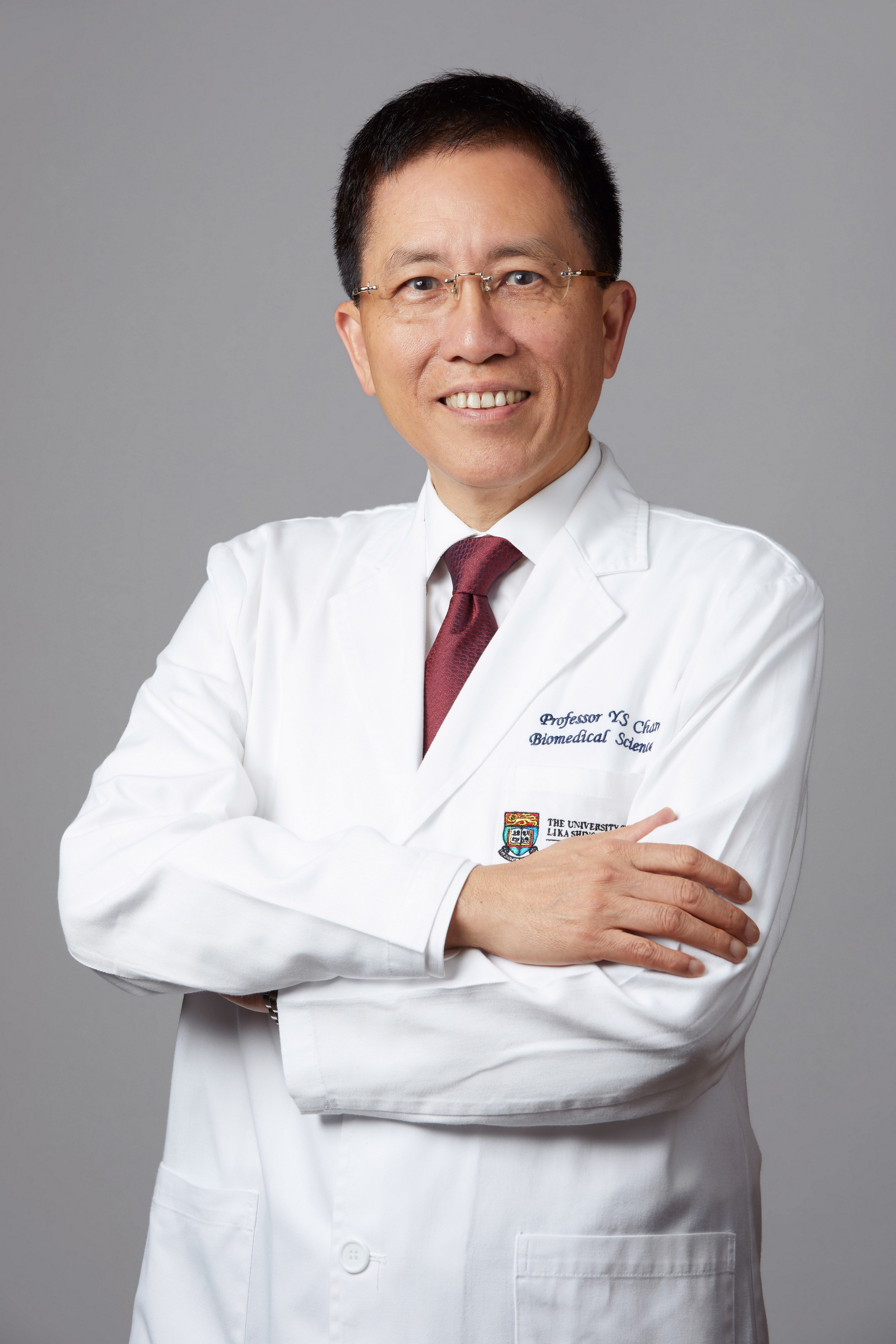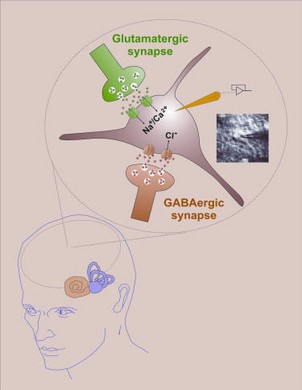
Professor Chan Ying-Shing
Senior Advisor to the Dean cum Director of Campus Development and Infrastructure
- BSc, PhD (HKU); CBiol; FRSB
- Senior Advisor to the Dean of Medicine
- Senior Advisor to the Director of Biomedical Sciences
- Director (Development and Infrastructure), Li Ka Shing Faculty of Medicine
- Co-Convenor, Strategic Research Theme on Neuroscience
Office: L4-64, Laboratory Block, 21 Sassoon Road, Hong Kong
Email: yschan@hku.hk
Phone: +852 3917 9163
Fax: +852 2855 9730
Web: HKU Scholars Hub
Web: ORCID
Biography
Professor Ying-Shing Chan graduated from The University of Hong Kong (HKU) and received his postdoctoral training at the Institute of Human Physiology at Pisa, Italy, and The Rockefeller University, USA. He is Senior Advisor to the Dean of Medicine (HKU), Senior Advisor to the Director of Biomedical Sciences (HKU) and was appointed the Dexter H C Man Family Professor in Medical Science of HKU in 2014. He also served as the Associate Dean (Research), Associate Dean (Academic Networking and Student Affairs), Associate Dean (Development and Infrastructure), Head of Department of Physiology, Deputy Director of the School of Biomedical Sciences, Co-Convenor of the HKU Strategic Research Theme on Neuroscience, and Director of HKU Neuroscience Research Center. Professor Chan is an elected Fellow of the Royal Society of Biology. He is the recipient of the First Medallion of the Australian Neuroscience Society. He has been invited by the Nobel Committee to nominate candidate(s) for the Nobel Prize in Physiology or Medicine. He also received the HKU Outstanding Researcher Award. He has a long record of commitment to education and was awarded the HKU Outstanding Research Student Supervisor Award and Medical Faculty Teaching Medal. He served as Co-Chair of the International Scientific Program Committee of the 39th Congress of International Union of Physiological Sciences (IUPS), Chair of International Brain Research Organization (IBRO) Asian/Pacific Regional Committee, President of Federation of Asian-Oceania Neuroscience Societies (FAONS), Vice-President of The Chinese Association for Physiological Sciences, Standing Executive Committee Member of the Chinese Neuroscience Society, President of Hong Kong Society of Neurosciences, and Secretary-General of the Hong Kong Brain Foundation. He is currently President of the Asian Pacific Society for Neurochemistry (APSN), Chair of the IUPS Commission on Neurobiology, and Executive Committee Member of U21 Health Sciences Group. He served as a panel member (Biology & Medicine) of the Research Grants Council of Hong Kong and the RAE Exercise (Health Sciences) conducted by the University Grants Committee of Hong Kong. He is the Founding Editor-in-Chief for IBRO Neuroscience Reports and Associate Editor for European Journal of Neuroscience. Professor Chan’s research interests include synaptic mechanisms underlying plastic modification of neural networks for spatial learning as well as the exploitation of human bone marrow stromal cell-derived glial cells and neurons in the re-assembly of functional neural circuits in neurodegenerative diseases.
Research Description
Neural plasticity: Circuitry development & rewiring after injury

Professor Chan’s research goal is to probe mechanisms that allow plastic modification of neural networks for spatial cognition. His team revealed a postnatal period critical to the assembly of brainstem circuits responsible for spatial navigation. Fine-tuning of these circuits require participation of parvalbumin neurons as revealed by pharmacological, viral tracing and chemo-/ optogenetic approaches. Excitatory-inhibitory balance in these circuits tunes synaptic plasticity that effects behavioral outcomes. Our finding that neuromodulators (such as endocannabinoid, serotonin, cholecystokinin) induce or reset experience-dependent synaptic plasticity highlights the impact of such agents on the acquisition of spatial learning.
Professor Chan’s team provided insights into signaling pathways that enhance derivation of myelinating glia and neurons from human bone marrow stromal cells. Findings hold promise for facilitating the re-assembly of functional neuronal networks after neural trauma and in neurodegenerative diseases.
Selected Publications
- Hu X.Q., Wu L.K., Rong K.L., Ke Y., Yung W.H., Shum D.K., Chan Y.S. (2025) Harnessing a non-canonical vestibular input to head-direction network rectifies age-related navigational deficits. Nature Aging (in press).
- Shi W., Wu K.L., Yang M., Botelho F.P., Chua O.W.H., Hu H.J., Ng K.P., Lam U.T.F., Tam K.W., Ma C.W., Shum D.K., Chan Y.S. (2025) Cannabinoid overrides differential triggers of GABAergic plasticity in vestibular circuits and distorts the development of navigation. iScience (in press).
- Jiang Q.F., Wu K.L., Hu X.Q., Cheung M.H., Chen W.Q., Ma C.W., Shum D.K., Chan Y.S. (2024) Neonatal GABAergic transmission primes vestibular gating of output for adult spatial navigation. Cellular and Molecular Life Sciences 81: 147. DOI: 10.1007/s00018-024-05170-x.
- Tam K.W., Wong C.Y., Wu K.L., Lam G., Liang X., Wong W.T., Li M.T., Liu W.Y., Cai S., Shea G.K., Shum D.K., Chan Y.S. (2023) IPSC-derived sensory neurons directing fate commitment of human BMSC-derived Schwann cells: applications in traumatic neural injuries. Cells 12: 1479. DOI: 10.3390/cells12111479.
- Zhang C., Wang H., Cheung M.C., Chan Y.S., Shea G.K. (2023) Revealing the developmental origin and lineage predilection of neural progenitors within human bone marrow via single-cell analysis: implications for regenerative medicine. Genome Medicine 15: 66. DOI: 10.1186/s13073-023-01224-0.
- Liu J.A., Tam K.W., Chen Y.L., Feng X., Chan W.L., Lo A.L., Wu K.L., Hui M.N., Wu M.H., Chan K.K., Cheung M.P., Cheung C.W., Shum D.K., Chan Y.S., Cheung M. (2023) Transplanting human neural stem cells with ~50% reduction of SOX9 gene dosage promotes tissue repair and functional recovery from severe spinal cord injury. Advanced Science 10: e2205804. DOI: 10.1002/advs.202205804.
- Lai S.K., Wu K.L., Ma C.W., Ng K.P., Hu X., Tam K.W., Yung W.H., Wang Y.T., Wong T.P., Shum D.K., Chan Y.S. (2023) Timely insertion of APMA receptor in vestibular circuit is required for the manifestation of righting reflexes and navigational performance. Progress in Neurobiology 221: 102402. DOI: 10.1016/j.pneurobio.2023.102402.
- Han L., Wu K.L., Kwan P.Y., Chua O.W., Shum D.K., Chan Y.S. (2021) 5-HT1A receptor-mediated attenuation of synaptic transmission in rat medial vestibular nucleus impacts on vestibular-related motor function. Journal of Physiology 599: 253-267. DOI: 10.1113/JP280610.
- Zhang A.J., Lee A.C., Chu H., Chan J.F., Fan Z., Li C., Liu F., Chen Y., Yuan S., Poon V.K., Chan C.C., Cai J.P., Wu K.L., Sridhar S., Chan Y.S., Yuen K.Y. (2021) SARS-CoV-2 infects and damages the mature and immature olfactory sensory neurons of hamsters. Clinical Infectious Disease 73: e503-e512. DOI: 10.1093/cid/ciaa995.
- Tsui Y.P., Lam G., Wu K.L., Li M.T., Tam K.W., Shum D.K., Chan Y.S. (2021) Derivation of oligodendrocyte precursors from adult bone marrow stromal cells for remyelination therapy. Cells 10: 2166. DOI: 10.3390/cells10082166.
- Ma C.W., Kwan P.Y., Wu K.L., Shum D.K., Chan Y.S. (2019) Regulatory roles of perineuronal nets and semaphorin 3A in the postnatal maturation of the central vestibular circuitry for graviceptive reflex. Brain Structure and Function 224: 613-626. DOI: 10.1007/s00429-018-1795-x
- Li Y.H., Han L., Wu K.L., Chan Y.S. (2017) Activation of 5-HT7 receptors reverses NMDA receptor-dependent LTD by activating PKA at medial vestibular neurons. Neuropharmacology 123: 242-248. DOI: 10.1016/j.neuropharm.2017.05.005.
- Cai S., Tsui Y.P., Tam K.W., Shea G.K., Chang R.S., Ao Q., Shum D.K., Chan Y.S. (2017) Directed differentiation of human bone marrow stromal cells to fate-committed Schwann cells. Stem Cell Reports 9: 1097-1108. DOI: 10.1016/j.stemcr.2017.08.004.
- Ma C.W., Zhang F.X., Lai C.H., Lai S.K., Yung K.K., Shum D.K., Chan Y.S. (2013) Postnatal expression of TrkB receptors in rat vestibular nuclear neurons responsive to horizontal and vertical linear acceleration. Journal of Comparative Neurology 521: 612-625. DOI: 10.1002/cne.23193.
- Ao Q., Fung C.K., Tsui A.Y., Cai S., Zuo H.C., Chan Y.S., Shum D.K. (2011) The regeneration of transected sciatic nerves of adult rats using chitosan nerve conduits seeded with bone marrow stromal cell-derived Schwann cells. Biomaterials 32: 787-796. DOI: 10.1016/j.biomaterials.2010.09.046.
External Grants
HMRF projects:
- Surface hyaluronidase-4 derivatized oligodendrocyte precursor cells for repairing inflammation-induced impairment in the CNS
- Cell-based therapy for congenital myelin disorders of CNS
- Overcoming hurdles in bridging critical nerve gaps to improve post-traumatic nerve regeneration and rehabilitation
- Towards cellular therapy with human bone marrow stromal cell-derived motor neurons in a mouse model of amyotrophic lateral sclerosis
- Fluoxetine-induced plasticity for improvement of spatial cognition deficits after neonatal cannabinoid exposure
GRF projects:
- Selective recruitment of inhibitory interneurons to vestibular microcircuits for distinct behavior
- Integration of new neurons into the mature vestibular circuitry requires GABAergic signaling for relevant outcome in behavior
- Serotonin-induced bidirectional modulation of activity-dependent synaptic plasticity tunes vestibular functions
- Long-term depression of inhibitory responses is critical to the maturation of the vestibular circuitry
- Vestibular nuclear signals regulate the postnatal development of a thalamic network for spatial navigation
- Brain-derived neurotrophic factor regulates plasticity in the vestibular system
NSFC/RGC project:
- Orexin-induced modulation of activity-dependent synaptic plasticity is critical for the maturation of vestibular circuitry and functions
CRF project:
- Neuronal mechanism of cholecystokinin-facilitated cross-modal learning and memory
SK Yee Medical Research Fund
- Neural crest-derived cells: Role in functional repair of the nervous system
Honours and Awards
- Chair, Commission on Neurobiology, International Union of Physiological Sciences, IUPS (2022– present)
- President, Asian-Pacific Society for Neurochemistry (2020– present)
- Co-Chair, International Scientific Program Committee, 39th World Congress of IUPS (2018–22)
- Chair, International Conference of Physiological Sciences 2016, Beijing (2016)
- First Medal of Australian Neuroscience Society (2008)
- President, Federation of Asian-Oceanian Neuroscience Societies (2002–07)
- Chair, Asia-Pacific Regional Committee, International Brain Research Organization, IBRO (2002–08)
- President, The Hong Kong Society of Neurosciences (1990–94)
- Outstanding Research Student Supervisor Award, The University of Hong Kong (2010)
- First Teaching Medal of the Faculty of Medicine, The University of Hong Kong (2001)
- Outstanding Researcher Award, The University of Hong Kong (1998)
Research Funding Agencies
1994 – 00 | Research Grants Council (RGC), Advanced Level Biology & Medicine Panel
1998 – 03 | National Natural Science Foundation of China / RGC Joint Research Scheme
1999, 2006 | Research Assessment Exercise (RAE), Health Sciences Panel, University Grants Council, HK Government
2009 – 12 | Selection Panel of Hong Kong PhD Fellowship Scheme, University Grants Council, HK Government
2015 – present | Grant Review Board of the Health and Medical Research Fund, HK Government
Editorial Boards of Scientific Journals
Founding Editor-in-Chief
2015 – present | IBRO Neuroscience Reports
Deputy Editor-in-Chief
2010 – 19 | Acta Physiologica Sinica
Associate Editor
2013 – 17 | Neuroscience Research
2013 – present | European Journal of Neuroscience
2018 – 20 | Journal of Neurophysiology
Editorial Board member
2004 – present | Behavioral and Brain Functions
2006 – present | Experimental Brain Research
2010 – present | Frontiers in Neuroendocrinology
2010 – present | Journal of Physiological Sciences
2011 – present | Neural Regeneration Research
2011 – present | Neuroscience Bulletin
2013 – present | International Journal of Experimental & Clinical Physiology
2013 – present | International Journal of Brain Science
2020– present | Journal of Chemical Anatomy

Follow HKUMed